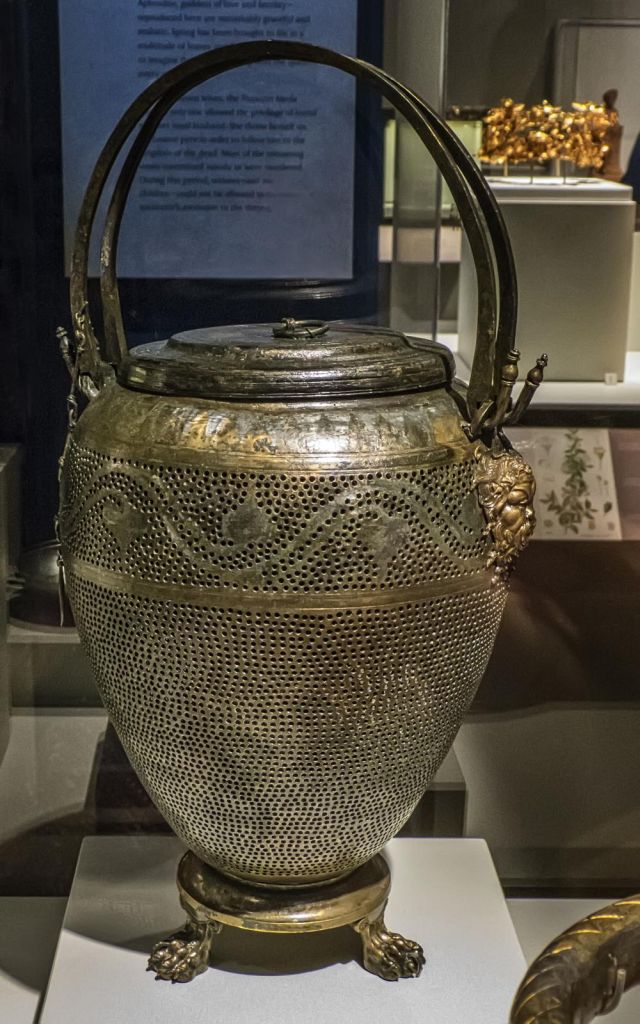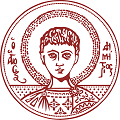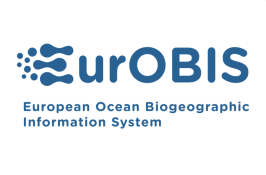Records of animal names, mostly terrestrial, appear occasionally in the extant written documents of the classical literature prior to Aristotle’s time. One can find some in the epics of Homer and Hesiod, the fables of Aesop, Aeschylus’ tragedies, Aristophanes’ comedies, Plato’s philosophy, Herodotus’ history and Hippocrates’ medicine. However, Aristotle was the first to assemble the existing names in a zoological treatise and construct new ones where needed. It is remarkable that around 30% of fish names and 70% of marine invertebrate and cetacean names that appear in his writings are not found in earlier written documents.
Many animal names used by Aristotle – such as polypous, sēpia, karabos, astakos, xiphias – will have been the vernacular names at that time. This is probably not the case for names which he invented in order to classify the observed animal diversity and which he attempted to describe based on common characteristics. Such names are: anhaima (bloodless), enhaima (blooded), ketodē (cetaceans), dithyra (bivalves), monothyra (univalves), malakia (soft-bodied), malakostraka (soft-shelled) and ostrakoderma (hard-shelled). This practice, using descriptive terms to name a species, is still in use today, both in scientific name-giving and in the assignment of common names (in a variety of languages) to a species. Some examples of both scientific and common names – referring to specific characteristics of the species - include: Sphaerephesia amphorata (‘amphorata’ referring to the amphora-like shape of the dorsal macrotubercles of this polychaete species), Eviota bilunula (‘bilunulata’ – Latin: two little moons - pointing to the two distinctive black crescent-shaped marks underneath the pectoral fin of this goby fish), Ancylomenes luteomaculatus (coining ‘luteus’ and ‘maculata’ from Latin, meaning ‘yellow spots’ and referring to the golden-yellow spots scattered on the carapace and abdomen of this palaemonid shrimp), and a range of English, French and Spanish names, all containing references to the looks of the species: fresa de mar, cactus sea squirt, Yeti crab, short-beaked saddleback dolphin, éponge mousse de carotte, red organ pipe coral and cohombro de mar negro.
For many of the early taxonomists in the 16th-18th centuries who had chosen the Greek language to develop the scientific terminology in their field of expertise, Aristotle’s works were a rich source of inspiration for zoological names. Linnaeus, in his Systema Naturae, while establishing the binomial nomenclature, used a variety of Greek names, mostly based on Aristotle. Those names were latinized from Aristotle’s Greek names, and include: Atherina, Asterias, Delphinus, Echinus, Muraena, Ostrea, Pinna, Perca, Phocoena, Sēpia, Sōlēn, Spongia, Trigla and Xiphias. Moreover, Brissus (Gray), Carcinus (Leach), Pinnotheres (Latreille), Scyllarus (Fabricius), and Spatangus (Gray) are examples of latinized Aristotelian names given to invertebrate genera by taxonomists of the 19th century. Probably due to insufficient understanding of Aristotle’s descriptions, some names have been wrongly used for taxa other than those described by him; a notable example is Lepas, the name given by Linnaeus to a genus of barnacles, while Aristotle used this name for the limpet now known as Patella caerulea (Linnaeus).
Due to the large number of taxa we are dealing with, issues with name-giving still remain today. The most common problems we encounter occur when a single taxon receives more than one scientific name (synonymy), or the same scientific name is assigned to more than one taxon (homonymy), as the authors were unaware that their name of choice had already been used before. The synonymy problem can be counteracted by making species registers that survey all published names and makes them accessible and searchable online, as is done by the World Register of Marine Species for the marine environment and numerous other registers globally (including those that are accessible through the LifeWatch project). To accommodate the homonymy problem with the ever-growing number of newly described taxa, the Interim Register of Marine and Non-marine Genera (IRMNG) lists homonyms at the family and genus level. This online list is easily accessible and aims to assist authors in avoiding the creation of homonym names.
Aside from zoological nomenclature, Aristotle’s writings also served as a source of terms pertaining to marine biology. A characteristic example is ‘Aristotle’s lantern’ which has been used since the 18th century for the jaw apparatus of echinoids. However, after a recent reexamination of Aristotle’s description, along with a study of archaeological findings from the area during the period he lived, and other contemporary texts, it was suggested that the term should be correctly used for the test of the sea urchin instead. It turns out that it is the whole animal that resembles an ancient lantern (lamp holder) and not the jaw apparatus that sits inside.



Left: Bleached corona of Tripneustes gratilla elatensis, lit from the inside. The lantern-like patterns shows very well. Image used with permission of Andreas Kroh (Natural History Museum Vienna). Center: a 3D volume rendering (from a microCT scan) of Strongylocentrotus purpuratus, in which 'Aristotle's lantern' is colored. Image used with permission of Alex Ziegler (Univ. Bonn). Right: An ornate bronze ‘Lychnouchos’ (Lantern) from the tomb of King Philip II of Macedon (336 BC). Photographed at the exhibit "The Greeks: Agamemnon to Alexander the Great" at The Field Museum in Chicago, Illinois. (c) Mary Harrsch / Flickr (2016.03.24) - CC BY-NC-SA 2.0.
The identification of animals behind Aristotle’s names is not always easy. It depends on the amount of information he provides, which in some cases is adequate and in others insufficient. A great help in this effort is the fact that many of Aristotle’s names give a clue for identifying his taxa when these are not easily recognizable from his descriptions. As can be seen from the following examples, the Greek words usually denote some of the animal’s characteristics: pinnotheres (pinna + tērō = guard), used by Aristotle to name the crab ‘guarding the fan mussel’ thereby referring to Pinnotheres pisum, a parasitic crab living inside bivalves (such as e.g. Pinna), and porphyra; Porfyreos – meaning purple-colored – is used a lot to refer to the colour of species, think e.g. about the algal genus Porphyra, making allusions to its reddish-purple colour. In Aristotle’s time however, it referred to three different species, all known as sources for the extraction of purple dye: Bolinus brandaris, Hexaplex trunculus and Stramonita haemastoma.
Additional assistance in identification can be obtained by the fact that almost all Aristotle’s marine animals have an Aegean distribution and that many of his names are still used in Modern Greek as common names for the same animal taxa, e.g. spongos (Dictyoceratida), dithyra (Bivalvia), pinna (Pinna nobilis), solen (Solenoidea), astakos (Homarus gammarus), echinos (Echinoidea), ichthyes (Pisces), selachia (Elasmobranchii), xiphias (Xiphias gladius), porhyra (Muricidae). Finally, help in the identification of names not well documented by Aristotle can sometimes be obtained from information on animal properties found in the works of other classical authors, subsequent to Aristotle, including Dioscorides, Xenocrates, Athenaeus and Galen, who wrote mostly about the uses of marine animals in diet and medicine.
Aristotle thus clearly lives on in marine nomenclature, not only by leaving behind a tremendous source of information and inspiration for scientists, but also in the taxa named after him. Over the years, marine taxonomists have described one genus and three species with a reference to this great man: Aristotelopanope (Crustacea, Brachyura), Bogmarus aristotelis (Pisces), Hemiasterella aristoteliana (Porifera) and Phalacrocorax aristotelis (Aves). Thus a man who lived 2400 years ago becomes immortal…

The scientific species name of the European shag (Phalacrocorax aristotelis), a cormorant breeding along rocky shores in southern and western Europe, commemorates the Greek philosopher Aristotle. Here a young bird in winter plumage. Photo: Roland François
References:
- Ganias, K.; Mezarli C.; Voultsiadou, E. (submitted). Aristotle as an ichthyologist. Aegean fish diversity 2400 years ago.
- Leroi, A.M. (2014). The Lagoon: How Aristotle Invented Science. Bloomsbury Publishing, London.
- Thompson D’Arcy, W. (1947). A glossary of Greek fishes. Oxford University Press, London.
- Voultsiadou, E.; Gkelis, S. (2005). Greek and the phylum Porifera: a living language for living organisms. J. Zool. 267: 143-157.
- Voultsiadou, E.; Vafidis, D. (2007). Marine invertebrate diversity in Aristotle’s zoology. Contributions to Zoology 76: 103-120.
- Voultsiadou, E.; Chintiroglou, C. (2008). Aristotle’s lantern in echinoderms: an ancient riddle. Cah. Biol. Mar. 49(3): 299-302.











